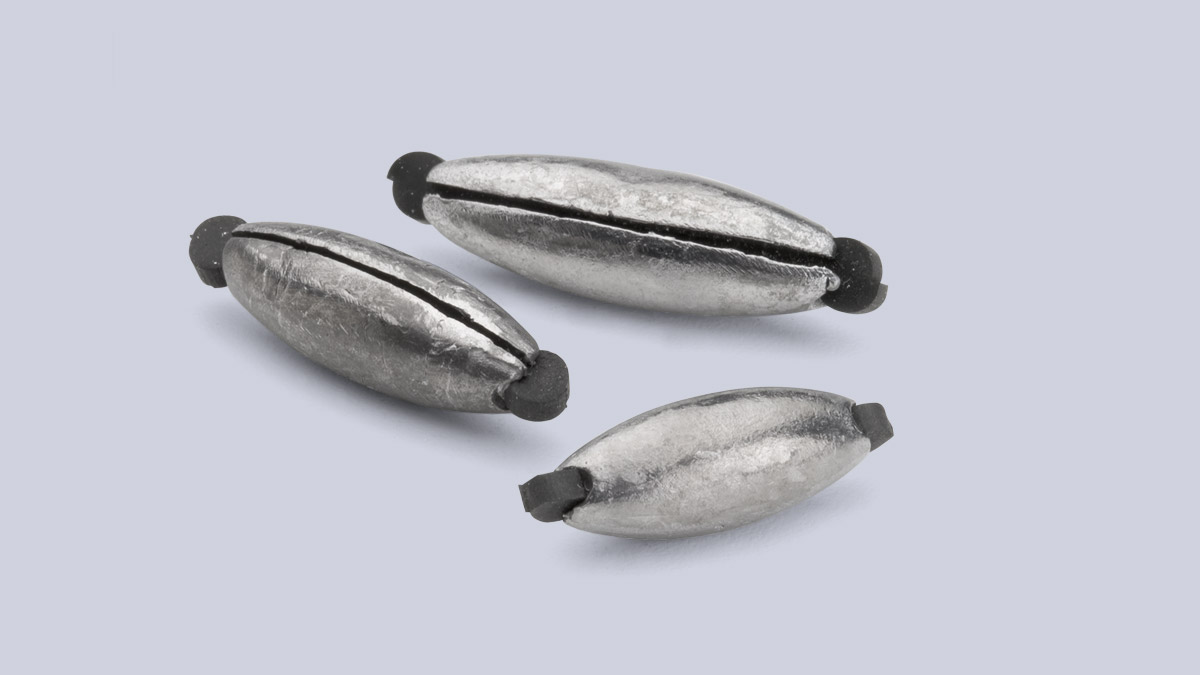Rubber core sinkers are a versatile addition to any angler’s tackle box. These sinkers feature an alloy oval or football-shaped outer body filled with a rubber core, complete with two twisting tabs at each end. The body includes a split groove, allowing the fishing line to pass through seamlessly, making them a preferred choice for many fishermen.
To use rubber core sinkers effectively, simply insert your fishing line through the split groove in the outer body, then twist the two rubber tabs in the opposite direction for approximately one full turn. This action securely wraps the line around the rubber core, firmly attaching the sinker. Releasing the sinker is just as easy—simply twist the tabs in the opposite direction.

The benefits of incorporating rubber core sinkers into your fishing rigs are numerous. Their quick and easy attachment, removal, and repositioning capabilities make them highly convenient. Unlike traditional split-shot sinkers, rubber core sinkers are gentle on fishing lines, virtually eliminating the risk of damage or degradation. Additionally, they provide a hassle-free way to adjust weight without the need for snap swivels or tying loops, offering anglers greater flexibility on the water. Moreover, these sinkers are less prone to snagging on rocks or underwater debris, reducing the risk of line breakage and minimizing tackle loss.
However, like any fishing equipment, rubber core sinkers do have their drawbacks. Maintaining them securely on the line can be challenging, especially when using smaller sinkers with thin lines. In such cases, the sinkers may slide along the line, posing difficulties in keeping them in place. Opting for American-made sinkers over those produced in China can mitigate this issue, as they often provide a better fit and tighter grip. Brands like Water Gremlin Rubber Core Sinkers are recommended for their superior quality and reliability. Ensuring a snug fit between the alloy body and rubber core is essential for maximum effectiveness, as it prevents slippage and enhances stability during fishing sessions.
Image/Source: ICatchFish





